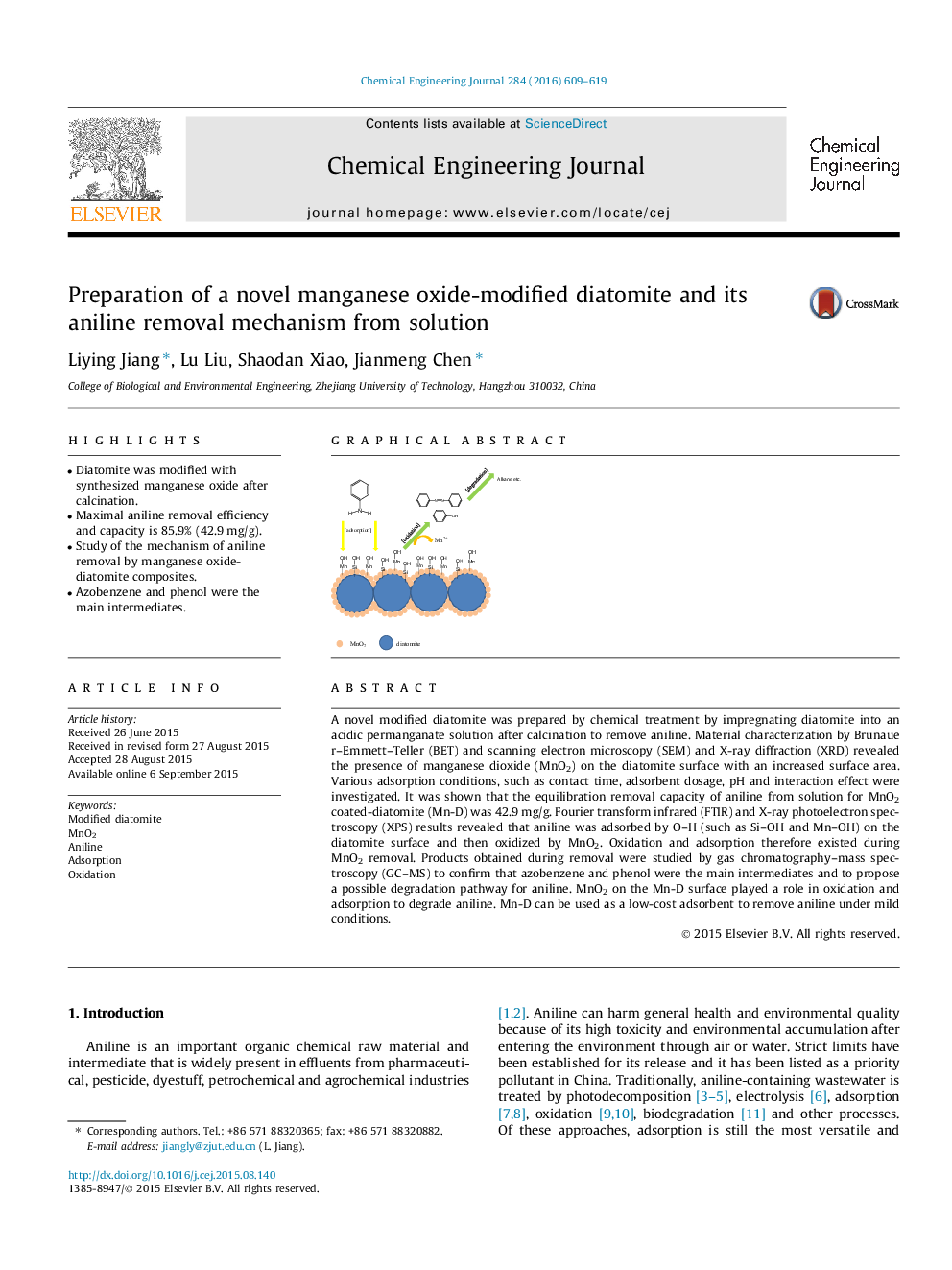| کد مقاله | کد نشریه | سال انتشار | مقاله انگلیسی | نسخه تمام متن |
|---|---|---|---|---|
| 145992 | 456356 | 2016 | 11 صفحه PDF | دانلود رایگان |
• Diatomite was modified with synthesized manganese oxide after calcination.
• Maximal aniline removal efficiency and capacity is 85.9% (42.9 mg/g).
• Study of the mechanism of aniline removal by manganese oxide-diatomite composites.
• Azobenzene and phenol were the main intermediates.
A novel modified diatomite was prepared by chemical treatment by impregnating diatomite into an acidic permanganate solution after calcination to remove aniline. Material characterization by Brunauer–Emmett–Teller (BET) and scanning electron microscopy (SEM) and X-ray diffraction (XRD) revealed the presence of manganese dioxide (MnO2) on the diatomite surface with an increased surface area. Various adsorption conditions, such as contact time, adsorbent dosage, pH and interaction effect were investigated. It was shown that the equilibration removal capacity of aniline from solution for MnO2 coated-diatomite (Mn-D) was 42.9 mg/g. Fourier transform infrared (FTIR) and X-ray photoelectron spectroscopy (XPS) results revealed that aniline was adsorbed by O–H (such as Si–OH and Mn–OH) on the diatomite surface and then oxidized by MnO2. Oxidation and adsorption therefore existed during MnO2 removal. Products obtained during removal were studied by gas chromatography–mass spectroscopy (GC–MS) to confirm that azobenzene and phenol were the main intermediates and to propose a possible degradation pathway for aniline. MnO2 on the Mn-D surface played a role in oxidation and adsorption to degrade aniline. Mn-D can be used as a low-cost adsorbent to remove aniline under mild conditions.
Figure optionsDownload as PowerPoint slide
Journal: Chemical Engineering Journal - Volume 284, 15 January 2016, Pages 609–619
